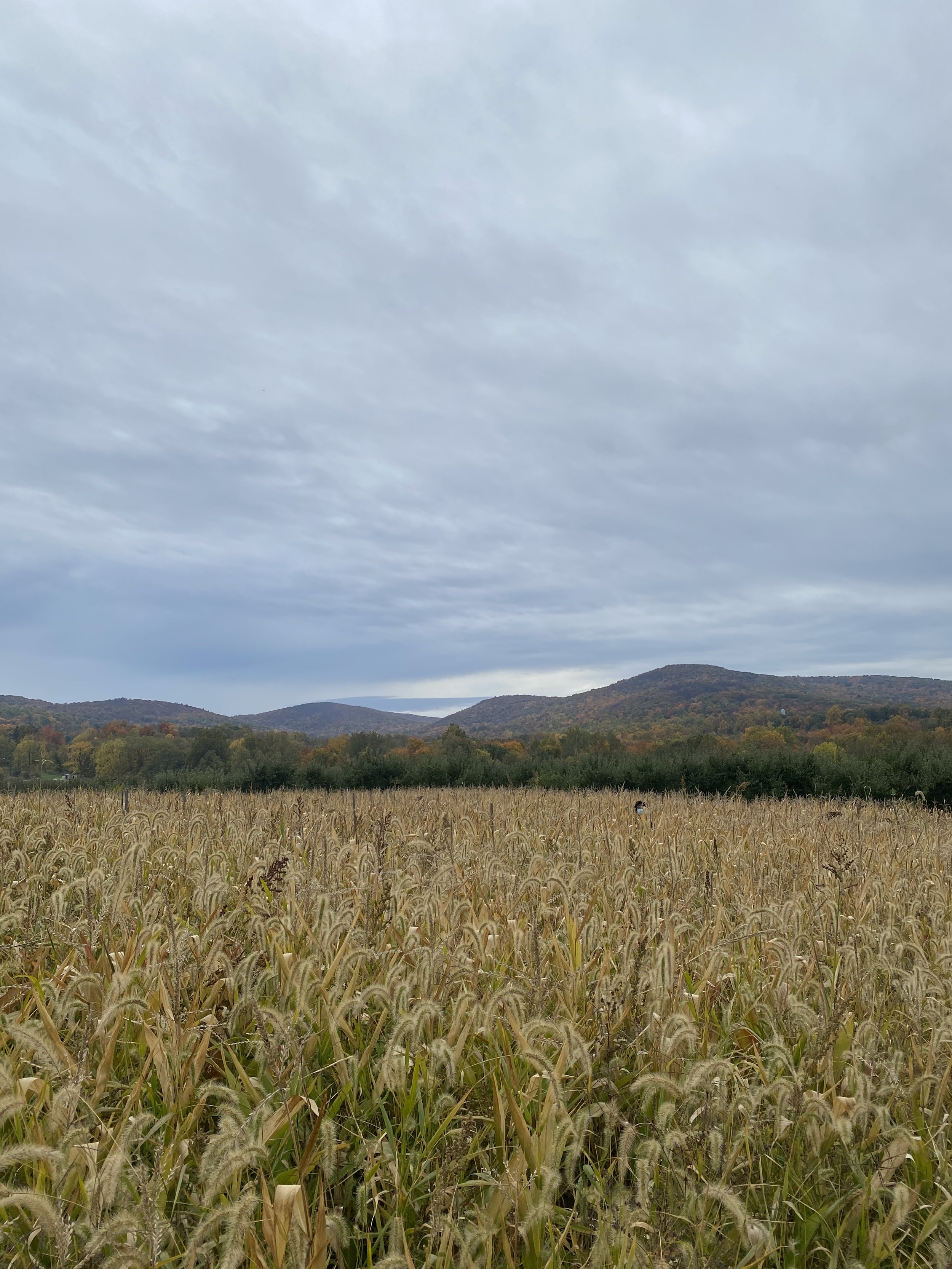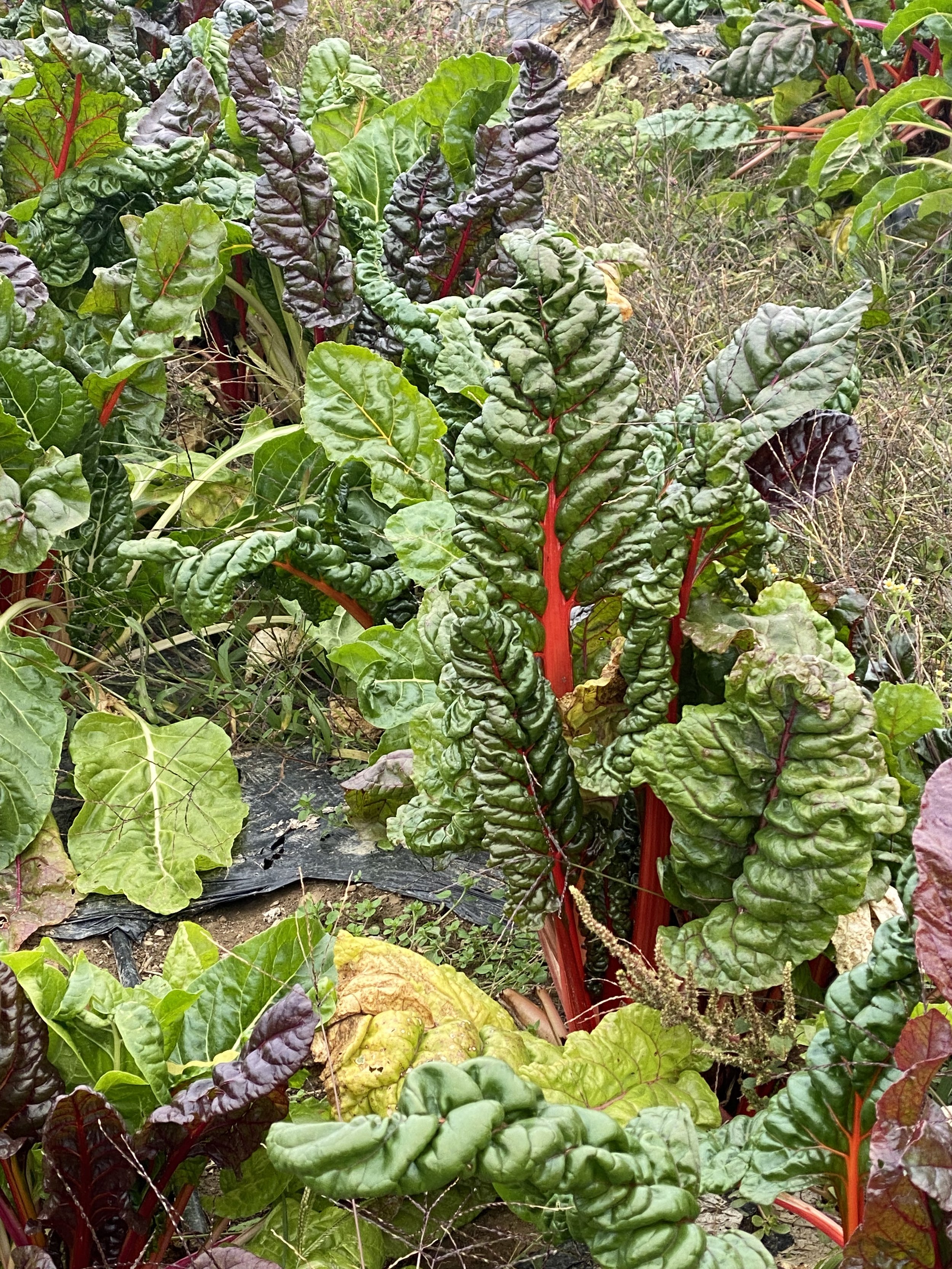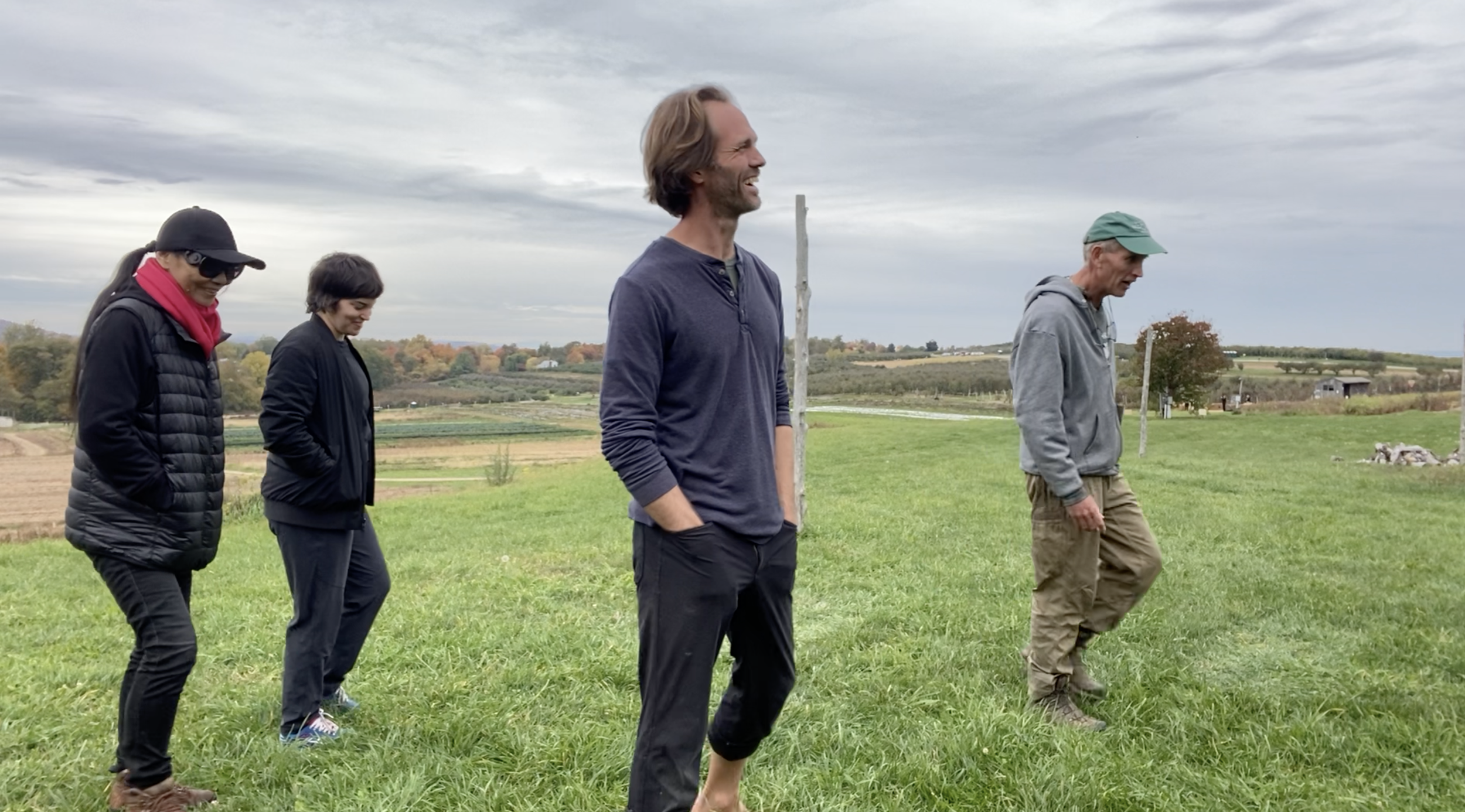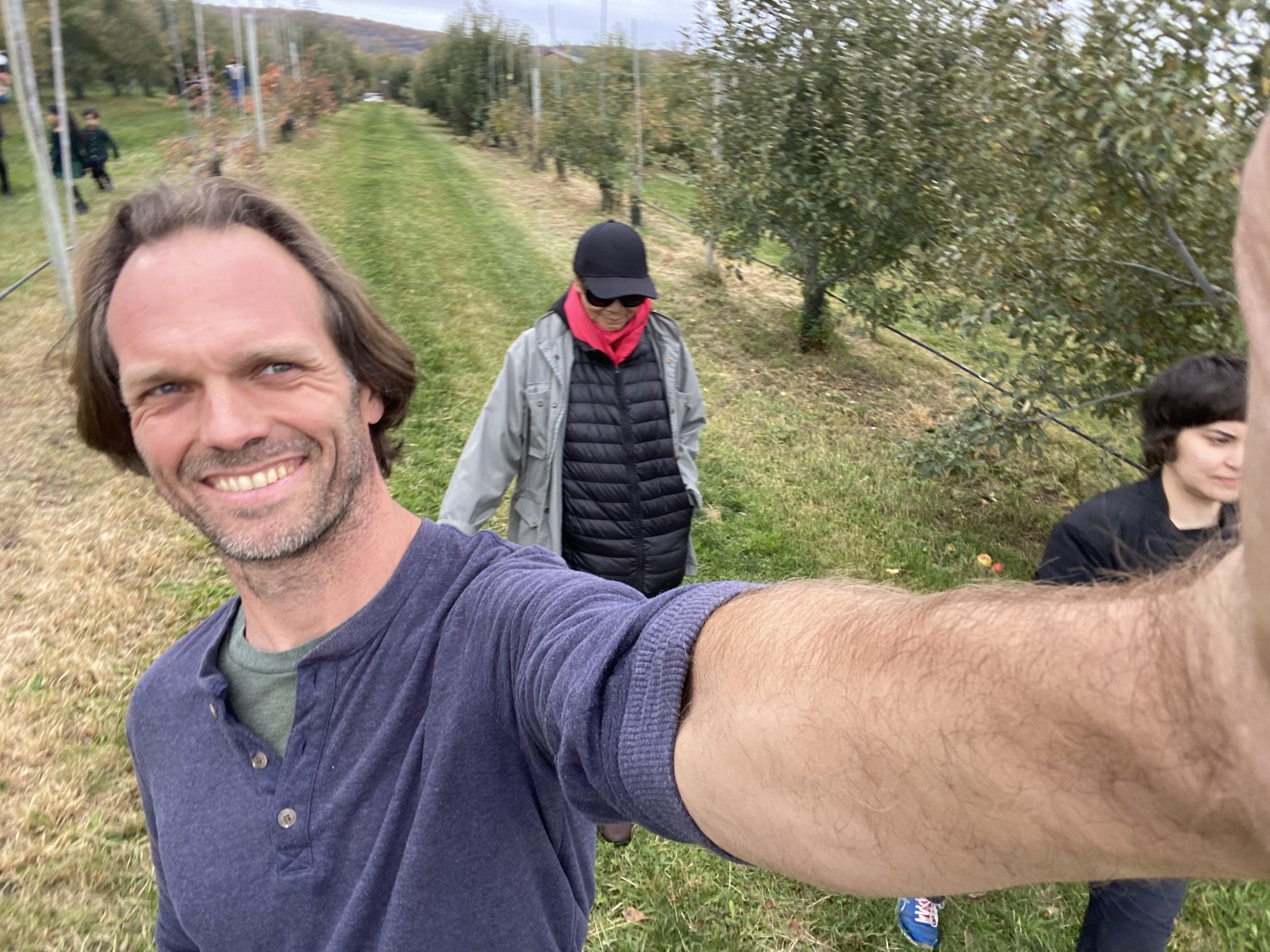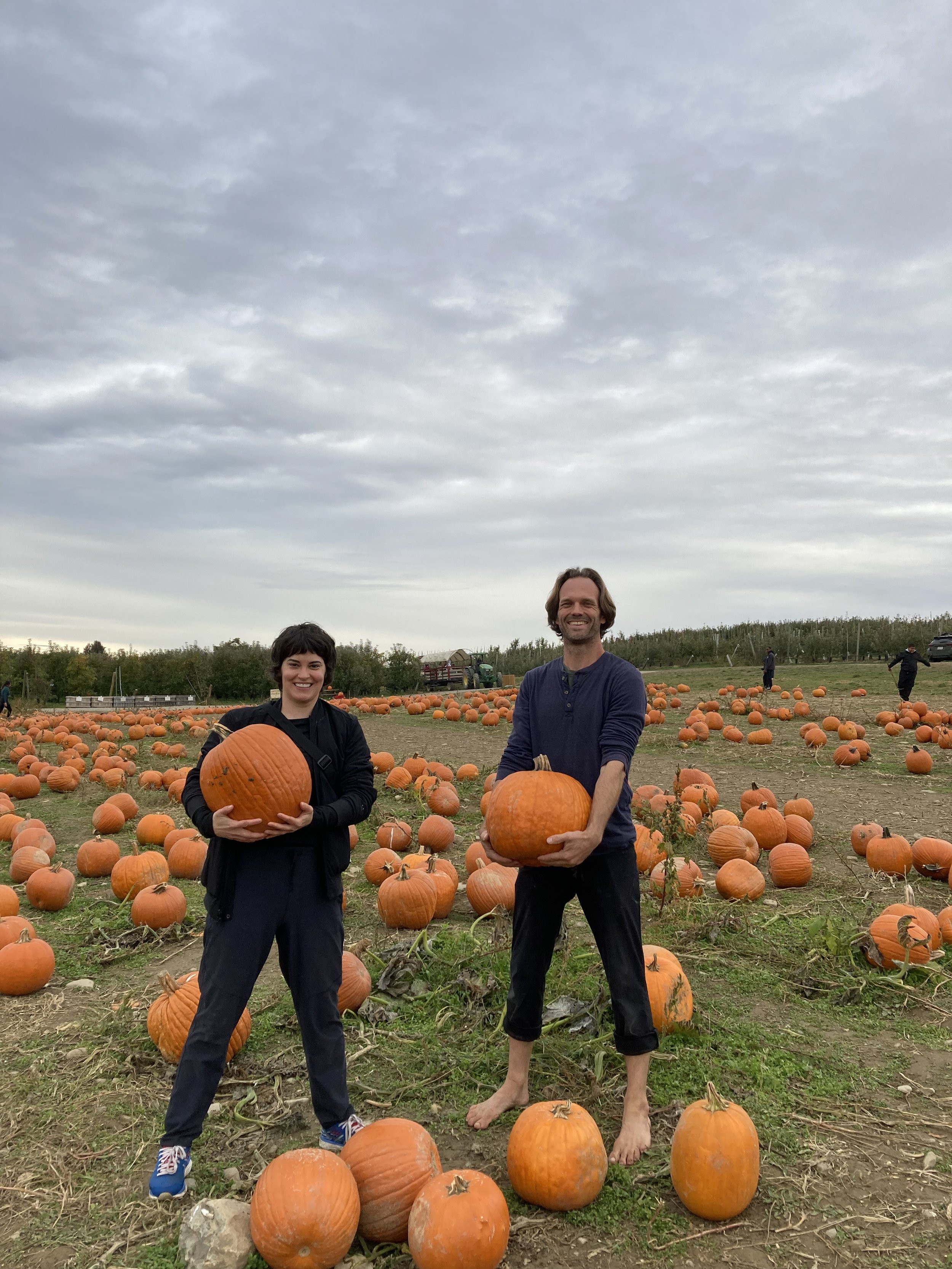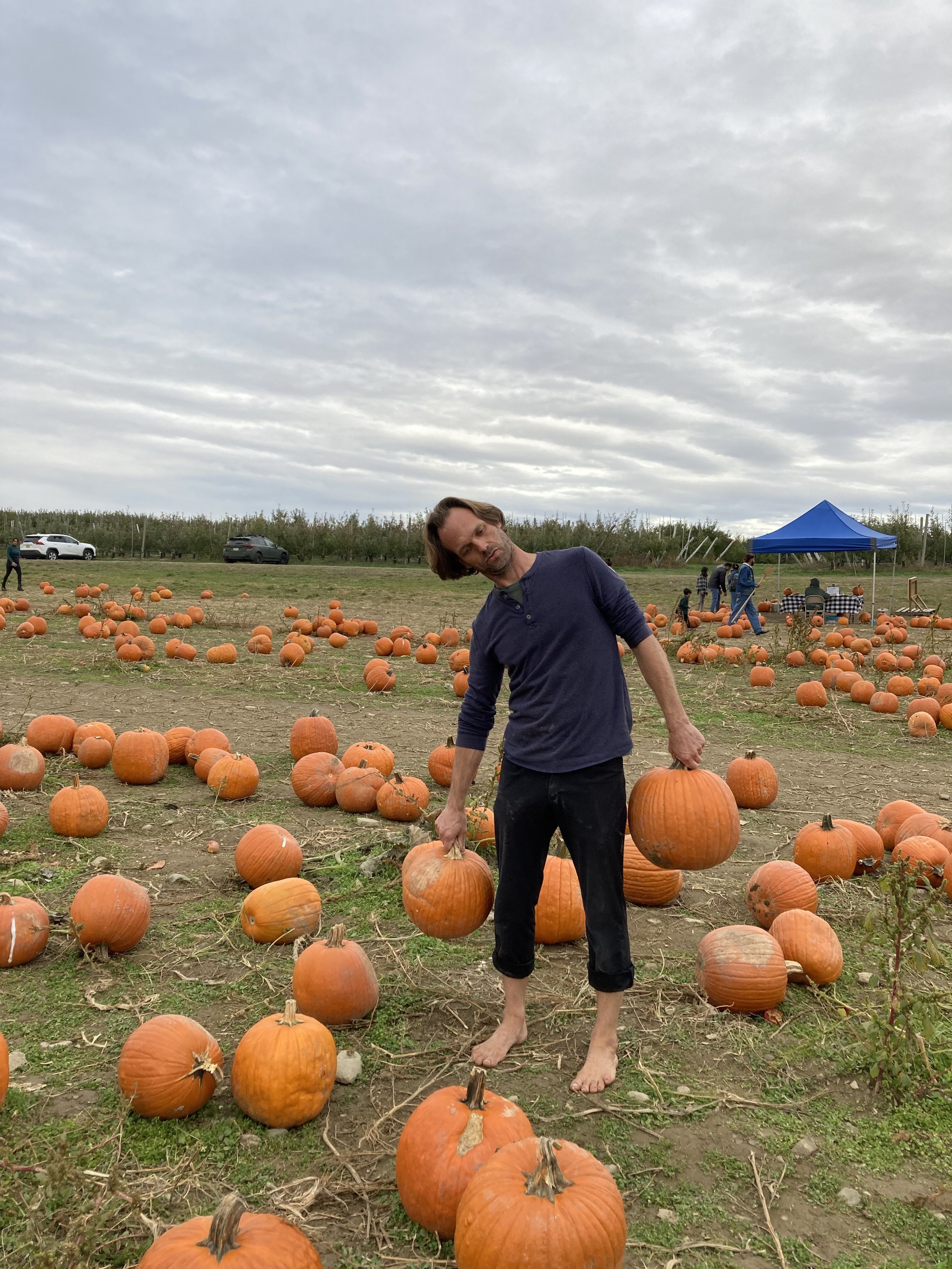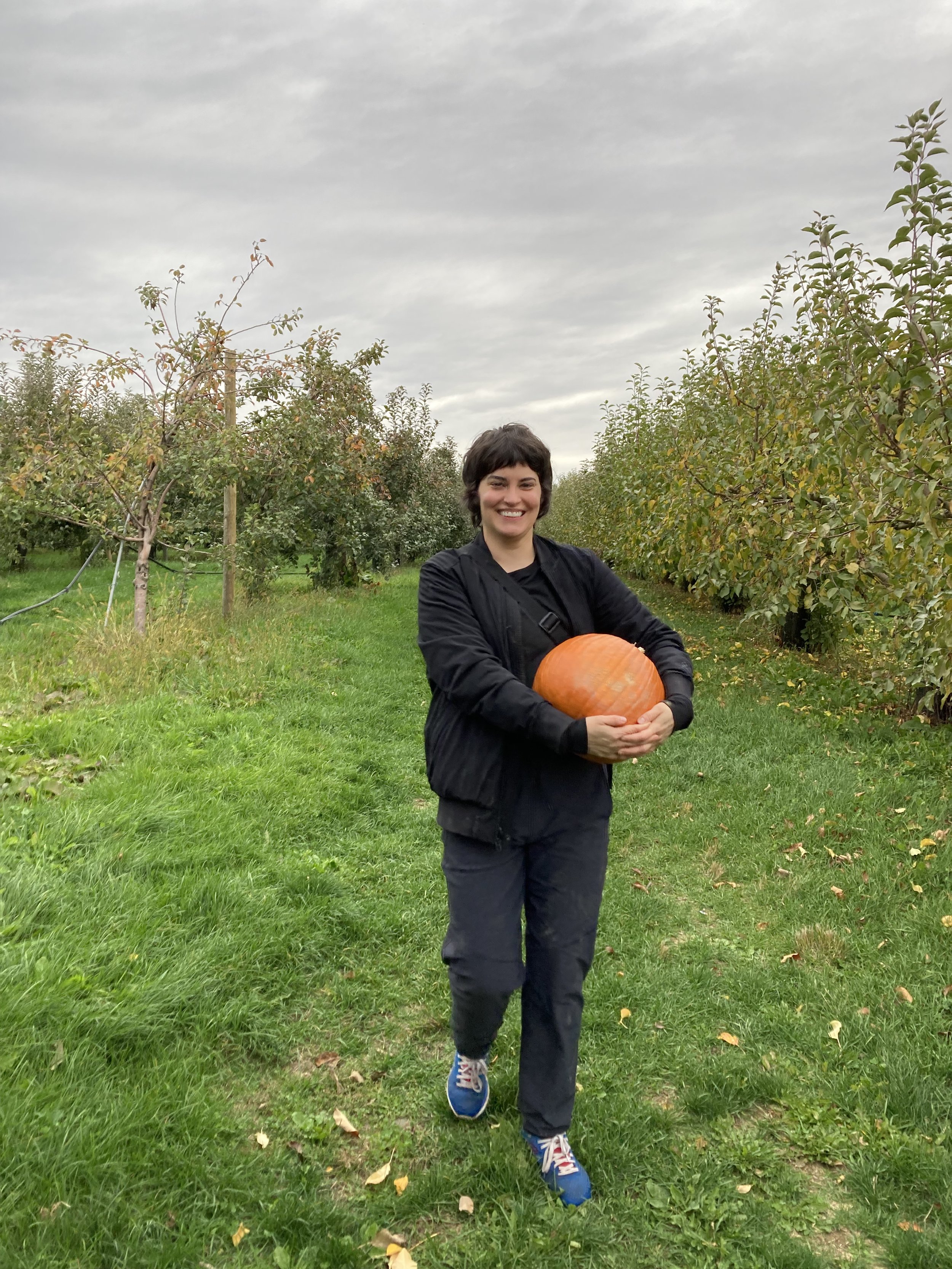Integration: Reflections on the Farm to Movement Experience
Back in October, a few of us met at Fishkill Farms in the Hudson Valley of New York. Our intention was to gather together, move our bodies, experience the farm, and contemplate how movement relates to the activities of daily living.
I’m often talking about getting more movement in our lives, but that message often gets confused when it is taken to mean that I think people should be exercising more or going to the gym more often. Doing those things may be part of the answer, but they’re still a relatively small proportion of the day. That’s why a larger part of my message is to figure out how movement is part of the daily habits, activities, and events that make up the majority of our lives.
If we find that our daily activities are largely sedentary, our task is to explore how we may make small changes, a bit at a time, to those activities so that we enrich our lives with a healthier movement diet. For example, if you spend time watching a show on TV, I’m not saying you shouldn’t be doing that at all, but what if instead of sitting on the couch, you simply sat on the floor where more changes in position were possible - thereby bringing more movement into your legs, hips and back?
OMG look at the vibrant color of that chard!!
A similar movement enriching possibility is in our social activities. So many social engagements are structured to be sitting in chairs around tables. In certain cases that’s all well and good, except for those living in a movement starved society (which is basically all of us). What if you could get movement while also filling your needs for community? This is one of the reasons reported for going to fitness classes. But with a little outside the box thinking, many of our communal and movement needs can be met at the same time. Our Farm to movement experience was just one such experiment.
We gathered at the Farm and moved through a class that explored the theme of what movements are generally found in activities such as gardening, or working with the earth. We also asked what movements or what parts of us are giving us trouble?
For gardening, it’s common to have complaints about the knees and lower back. So, we worked on movements that would help those parts move more freely and explored techniques to keep those parts safe as well.
If you’d like to experience that class, sign up for my Virtual Class Library. You’ll automatically get a free trial week!
Here’s my challenge to you:
Find an activity you love or would love doing.
Ask yourself what prevents you from fully enjoying that activity.
If your obstacles have something to do with the body, can you get curious?
Is there another way of moving that helps your body feel better?
Can you break the movements down into smaller parts?
Can you do a little less? Enough to keep you engaged but stopping before the point of pain?
Can you find the specific movement that’s not working and practice that movement? Or get help with it?
If you’d like help, contact me for an initial consultation for movement coaching. I’d love to help!If your obstacle seems less tangible than physical discomfort (lack of motivation, emotional resistance, time management), consider getting curious again and asking why?
Don’t try to brow beat, shame or force yourself to do the activity. A) It never works. And B) that’s a quick way to lose the enjoyment of the activity in the first place.
Keep asking ‘why’ until you feel you’ve gotten to the source. Usually insight can occur after asking why 4 or 5 times.
Make a little change that increases the likelihood you’ll do the activity. Note, I didn’t say just do it. Rather, just make a little change that gets you closer to it, and see how you feel.
After the class, we had a wonderful exchange with the Farm Manager where he told us the story and history of the farm along with a really informative perspective on their eco-sustainable and organic farming methods. He took pride in how delicious their apples were because of the care they take in their farming. And he was right!
We then took a stroll around the farm, picking apples, and practicing the movements of lifting and carrying pumpkins.
Here’s my 2nd challenge to you:
Take any activity you’re engaged in (even if it’s a sedentary one like sitting at a desk at an office)
If the activity is fairly sedentary, get curious and creative. Could I move, sit, stand, in any other way while doing this activity? What sort of movement breaks could I take periodically?
If the activity requires movement of some kind. Practice it intentionally. Pause a moment to observe how you move your body and challenge yourself to do it with more awareness and intention. In this way, everything we do can become a movement practice.
We finished the afternoon with a tasting of the Farm’s own brewed cider.
This is where I reflected on the day, the things we explored, but most of all, the opportunity to commune with friends in meaningful activity.
I’m looking forward to the next year with more events like this! I hope you’ll join us so we can move together toward a healthier, more connected world.
To stay connected:

